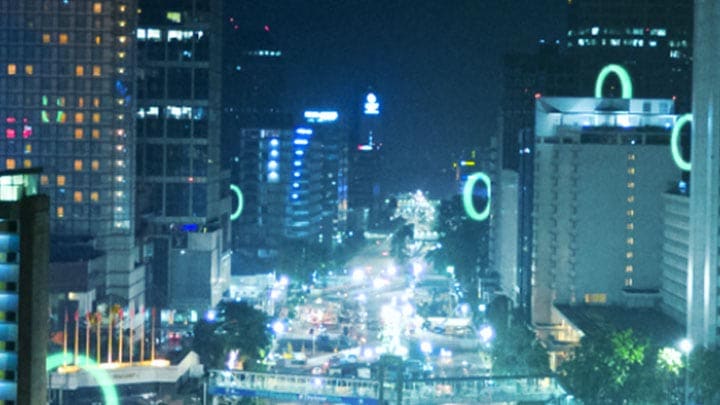February 08, 2021
Where does the UK stand on sustainability? And what eco-friendly design projects showcase their success to date?
February 08, 2021
Where does the UK stand on sustainability? And what eco-friendly design projects showcase their success to date?
Back in 2019, 17 UK-based architecture studios rallied together to declare a climate and biodiversity emergency. Including Zaha Hadid Architects, David Chipperfield Architects, and Foster + Partners, this passionate plea demonstrated the UK’s commitment to building better, more sustainable design practices. After all, the built environment currently accounts for 40% of the UK's carbon emissions.
From finding creative ways to improve airflow, to managing temperature levels, to bringing daylight in, eco-friendly building design can feature a lot of moving parts. For any architect tasked with creating a sustainable space, what are some important things to consider?
Certainly, how the structure contributes to the bigger picture. Moving away from a throwaway society and towards a circular economy means using renewable materials that can be recycled or repurposed at end of life. Bamboo, cork, or reclaimed wood are viable options for construction; especially important for an industry that has been slow to respond to more sustainable practices.
And the interiors can have just as much impact, with lighting being a sure-fire way to save energy while also supporting well-being. For example, smart luminaires fitted with sensors use the power of the Internet of Things (IoT) to support applications such as automatic dimming. This can have a significant effect on reducing energy consumption.
Originating in Germany, Passivhaus refers to an ultra-energy efficient home or building, requiring little to no heating or cooling.
The UK has come a long way since 2009, and now has well over 1000 passive buildings all around the country. And the designs are getting more adventurous; advancing from simple family homes to complex multi-purpose spaces.
The Enterprise Center, part of the University of East Anglia in Norwich, was built in 2015 as a space for business support workshops, networking activities, and open plan offices. Dubbed the UK’s greenest building, Architype’s award-winning design went on to become the first international building to offer Passivhaus performance alongside renewable materials.
Sourced from local suppliers, the renewable building materials have been left deliberately exposed, allowing users to engage directly with them while promoting a circular economy. Plus, as the center is set adjacent to the historic gardens of Earlham Hall, it complements the surrounding landscape — a wealth of green space that supports the well-being of users.
Alongside its Passivhaus status, it also achieved the BREEAM Oustanding rating, and is recognised internationally as a world-class facility.
On top of being Passivhaus pioneers, the UK has added another sustainable notch to its belt: smart lighting.
The City of London has embarked on a project to reduce both its power consumption and energy costs by switching to connected lighting. Having already cut down by 60%, LED luminaires that are connected via the IoT are a simple yet progressive way to lessen environmental impact.
Eventually, there will be 15,000 luminaires across the City of London. Thanks to data collected via sensors, the software can adjust the light levels depending on location, time, or when it’s busiest. What’s more, by communicating with other sensors that react to traffic or pollution, the connected lighting becomes part of a smart city ecosystem.
Retail giants Marks & Spencer installing our 3D-printed luminaires made for another UK sustainable lighting success. The luminaires are 100% recyclable to support a circular economy, and the manufacturing process has a 47% lower carbon footprint than traditional metal designs. To top it off, they look great!
Thanks to the pandemic, the world’s focus on sustainability is greater than ever. Despite the relatively unknown outcome of leaving the EU, the UK has made significant progress so far — but will it continue?
Pioneers of Light is a community of the world’s top architects, lighting designers and engineers, united by a passion for realizing their visions through innovative lighting. We guide and inspire the next generation to deliver sustainable lighting solutions that make the world a better and brighter place.
Want to know more about the Pioneers of Light, get in touch!
Banner image: Crossrail Sky Garden Canary Wharf, London, United Kingdom © Howard Kingsnorth
Signify (Euronext: LIGHT) is the world leader in lighting for professionals and consumers and lighting for the Internet of Things. Our Philips products, Interact connected lighting systems and data-enabled services, deliver business value and transform life in homes, buildings and public spaces. In 2022, we had sales of EUR 7.5 billion, approximately 35,000 employees and a presence in over 70 countries. We unlock the extraordinary potential of light for brighter lives and a better world. We achieved carbon neutrality in our operations in 2020, have been in the Dow Jones Sustainability World Index since our IPO for six consecutive years and were named Industry Leader in 2017, 2018 and 2019. News from Signify is located at the Newsroom, Twitter, LinkedIn and Instagram. Information for investors can be found on the Investor Relations page.
